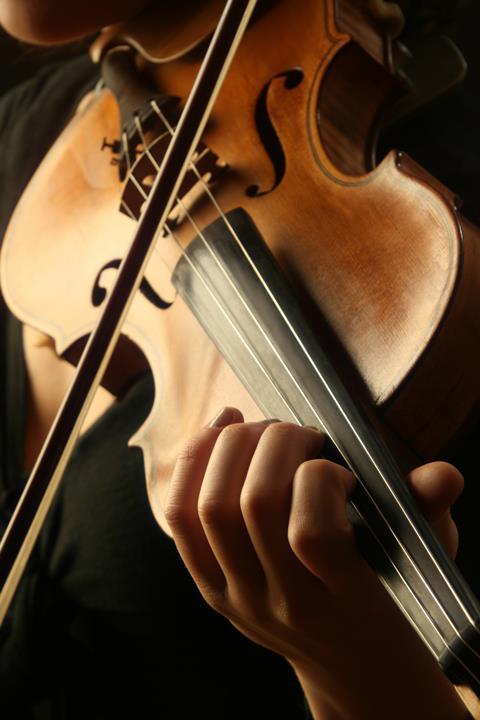J.L.H. Thomas delves into a physical exploration of what causes numbness, as well as exercises to help strengthen muscles to alleviate its symptoms

Explore more Technique articles like this in The Strad Playing Hub
Violinists in later life may sometimes be troubled by numbness in the fleshy part of the fingertips of the left hand, especially when practising music with many rapid notes, such as Bach or Kreutzer no.2, which makes playing difficult and most unpleasant. A similar condition, with less severe consequences, may also be experienced in the right hand. Even well-known players have been afflicted by this malady, including Adolf Busch according to his biographer, Tully Potter, and my teacher, Joseph Segal.
The affliction is sometimes termed ’neuritis’ (literally, inflammation of the nerve), but the diagnosis remains uncertain and too unspecific to be of value in treatment. Similar numbness is also sometimes attributed to the effect of cervical osteophytes (abnormal growths of bone in the neck), which may press upon the sensory nerves, distributed to the fingers, at their origin where they emerge from the foramina (openings in the spine) between the cervical vertebrae. A neurologist once assured me, however, that everybody over the age of 50 has some osteophytes in the cervical vertebral column (i.e. neck), but that these are usually asymptomatic, and would have to be ‘very bad’ to cause numbness. Cold fingers may also in some cases be a contributory factor, but this can easily be prevented.
It seems rather that the numbness may arise in the shoulder region, namely at the midpoint (the neuromuscular junctions of the upper trapezius and levator anguli scapulae muscles) between the spine (lower cervical vertebrae) and the protuberance at the outer end of the shoulder (acromial process of the scapula), where muscles can compress the sensory nerves of the hand. Deliberately keeping the shoulder low and relaxed while playing should help prevent numbness. If it arises during playing, the numbness can, if circumstances permit, often be relieved temporarily by inclining the head as far as possible to the right and slightly backwards (in the case of numbness in the left hand), and letting the left arm hang heavily in order to stretch the muscles of the neck and arm. When away from the instrument, massage of the shoulder area, by oneself or another, which can certainly help relieve stiffness in the shoulder and neck, may possibly also help prevent the onset of numbness.
In my experience, however, strengthening the muscles of the shoulders has proved to be the key to alleviating numbness in the fingers in the longer term, which thus ultimately reflects the general weakening of the musculature with age. The most effective way of strengthening the shoulder muscles is undoubtedly to practise press-up: from a prone position, the body is raised by pressing both hands placed flat on the floor just beyond the shoulders with the fingers pointing forward or slightly inward or outward, straightening the arms, and then lowering the body slowly. This exercise is also often recommended for general health by keep-fit instructors. The body need only be raised from the knees, not the feet as in orthodox gymnastics, but the trunk should be kept as straight as possible; and one must breathe in going down, and out going up. Five to ten repetitions once or twice a day, say, should have an appreciable effect after a couple of months, if not prevent a recurrence of the numbness altogether.
Those averse to press-ups could try instead the once popular, but probably less effective ‘isometric’ exercise of standing in a doorway and placing the heel of both hands up against the lintel, with the fingers pointing back and the arms held roughly the width of the shoulders apart, and then pressing as hard as possible, for as long as possible, and as often as possible. For best results, try both exercises.
Read: Setting up the left hand: a guide for beginner violinists
Read: Never ignore a niggling pain, says cellist David Finckel
Explore more Technique articles like this in The Strad Playing Hub
The number one source for playing and teaching books, guides, CDs, calendars and back issues of the magazine.
In The Best of Technique you’ll discover the top playing tips of the world’s leading string players and teachers. It’s packed full of exercises for students, plus examples from the standard repertoire to show you how to integrate the technique into your playing.
The Strad’s Masterclass series brings together the finest string players with some of the greatest string works ever written. Always one of our most popular sections, Masterclass has been an invaluable aid to aspiring soloists, chamber musicians and string teachers since the 1990s.
American collector David L. Fulton amassed one of the 20th century’s finest collections of stringed instruments. This year’s calendar pays tribute to some of these priceless treasures, including Yehudi Menuhin’s celebrated ‘Lord Wilton’ Guarneri, the Carlo Bergonzi once played by Fritz Kreisler, and four instruments by Antonio Stradivari.

























































No comments yet